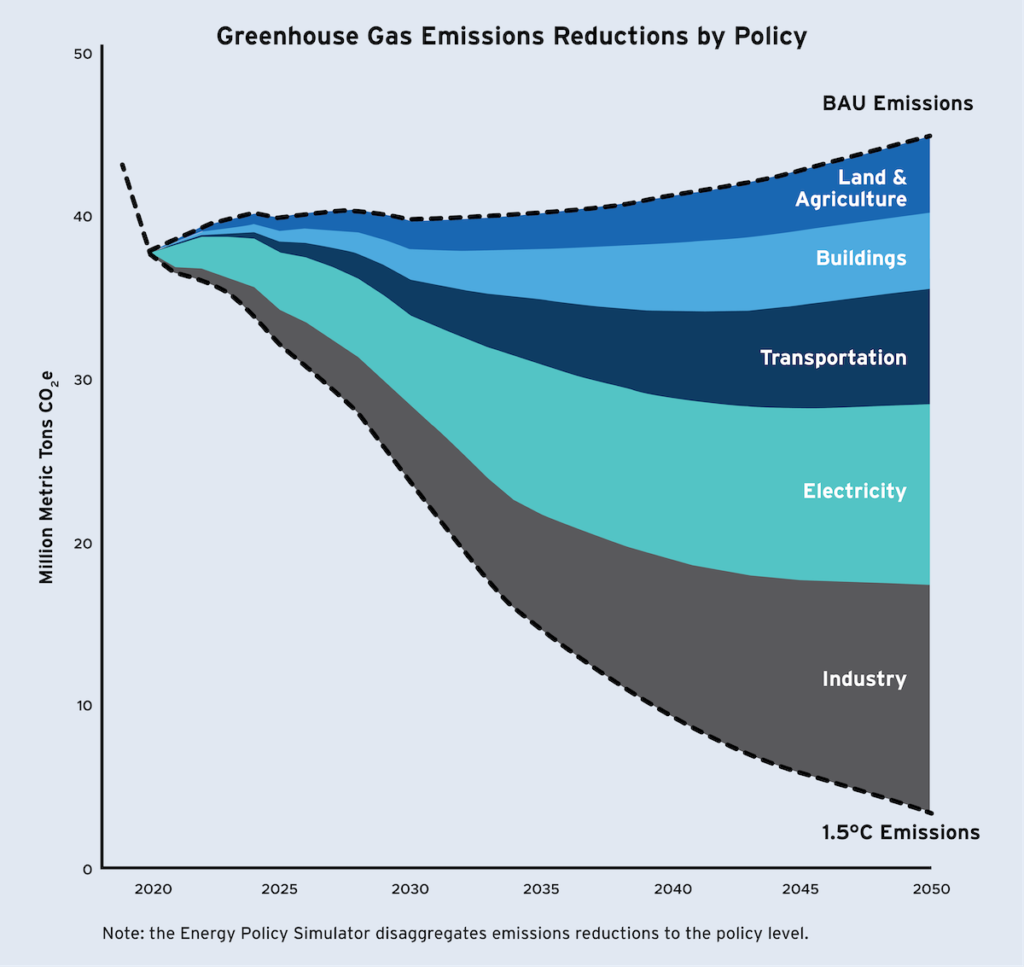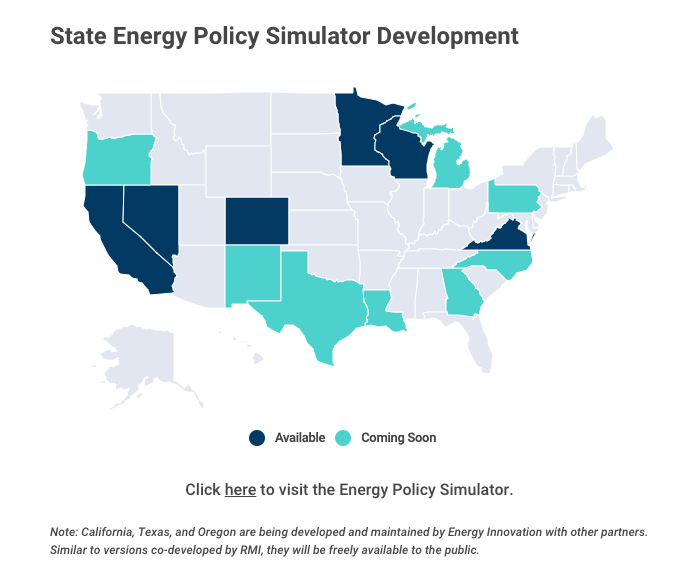
Democratizing Data
Supporting Informed State Climate Action with the Energy Policy Simulator
As we enter the spring of 2021, we are already well into the decisive decade. By 2030, the United States needs to reduce greenhouse gas emissions by 50–65 percent below 2005 levels to limit climate change to 1.5°C of warming. Fortunately, after four years of a leadership vacuum at the federal level, the Biden-Harris administration is already moving to enact sweeping federal policies to rapidly drive down emissions.
This is welcome news, but it’s not enough. Reducing emissions at the scale and speed required calls for a whole-of-society approach. US states are a critical part of the solution. In the absence of federal leadership, states and other non-federal entities have led the way on climate action with ambitious commitments and action aligned with the Paris agreement goals. States are continuing to lead by partnering with the federal government to drive a unified American response to climate change through America Is All In, US Climate Alliance, and other coalitions.
A Tool to Drive Climate Action
One of the challenges that states face in driving climate action is a lack of robust state-level analytical tools to help policymakers and advocates identify and support the most impactful decarbonization policies across all sectors of the economy. To address this, RMI has launched a new State Policy Analysis and Modeling initiative with three core values:
- Data democratization. Trusted data is critical to inform policymaking and advocacy. Our analysis products use open-source data wherever possible and are freely accessible to all, making robust analytical capacity available to all stakeholders, encouraging dialogue and reducing information asymmetry.
- Analysis at the speed of policy. Policymakers and advocates need the tools to take action now; our focus on accessible analysis and tools reduces friction and equips users for informed action in the near term.
- Lighting the path for rapid climate action. Our analysis provides users with the tools to inform evidence-based policy that secures a 1.5°C future.
RMI’s first effort under this initiative is a partnership with Energy Innovation to develop state-level models of the Energy Policy Simulator (EPS). EPS is an open-source, peer-reviewed model for estimating the environmental, economic, and human health impacts of hundreds of climate and energy policies. It is a simplified version of the deep decarbonization pathways modeling approach with additional attention to modeling common policy tools such as carbon pricing.
The EPS is provided in a user-friendly web app that calculates estimated impacts in seconds. While it doesn’t fully replace more sophisticated, customized analyses, the EPS serves as a screening tool to help policymakers understand the relative impacts of different policies and identify the most impactful policies for accelerating decarbonization.
Asking and Answering the Right Questions
State-level versions of the EPS will answer four critical questions for both policymakers and advocates using the tool:
Where are we? The business-as-usual (BAU) scenario in each EPS model shows projected statewide emissions through 2050 under the current policies relative to any existing state goals. In most cases, this illustrates the need for near-term climate action to meet targets.
Where do we need to be? The EPS displays target emissions ranges for any existing state climate targets. It also displays an emissions range that aligns with a 1.5°C future, which translates to a minimum 50 percent reduction in emissions by 2030 and net zero emissions by 2050. These visual cues in the tool help users interactively design policy scenarios that meet or exceed targets.
How do we get there? In the world of climate change policy, stakeholders often agree on the basic recipe for slowing climate change. However, the package of policies to achieve those aims will differ from state to state depending on their emissions profile and political landscape. The EPS includes hundreds of policy levers with customizable stringencies and implementation schedules. In-state practitioners can use this flexibility to model policy interactions and the effects of waiting on climate action.
What are the benefits? Aggressive climate change policy not only reduces emissions. It also holds incredible opportunity to spur economic growth, create jobs, and reduce harmful air pollution that causes hundreds of thousands of premature deaths every year around the country. In the recently released Colorado EPS, the 1.5°C scenario estimates that climate policy can unlock over 20,000 jobs and avoid nearly 400 pollution-related deaths a year by 2030.
Enabling States to Make Data-Informed Decisions
As of this writing, five state models are available with nine more in active development (see below). State tools are developed in consultation with state agencies and advocates to ensure we are using the most granular public data available and are accurately reflecting the policy landscape on the ground.
Already, advocates and policymakers around the country are using the EPS to deliver timely and actionable policy insights. In Wisconsin, analysts are using the EPS to scope policies for their upcoming Clean Energy Plan. In Nevada, the 2020 State Climate Strategy identifies the EPS as a key modeling tool for tracking progress toward climate goals.
Now is the time to enact strong policy to decarbonize our economy, unlock new economic opportunity, and address historic environmental and climate injustices. While no single tool can address all of these challenges, the EPS puts robust modeling in the hands of policymakers and advocates on the ground, enabling them to make data-informed decisions at the scale and speed necessary to meet the challenge of climate change.
RMI and Energy Innovation will be rolling the tool out to more states throughout 2021. If you are interested in EPS for your state, please reach out to our team.


